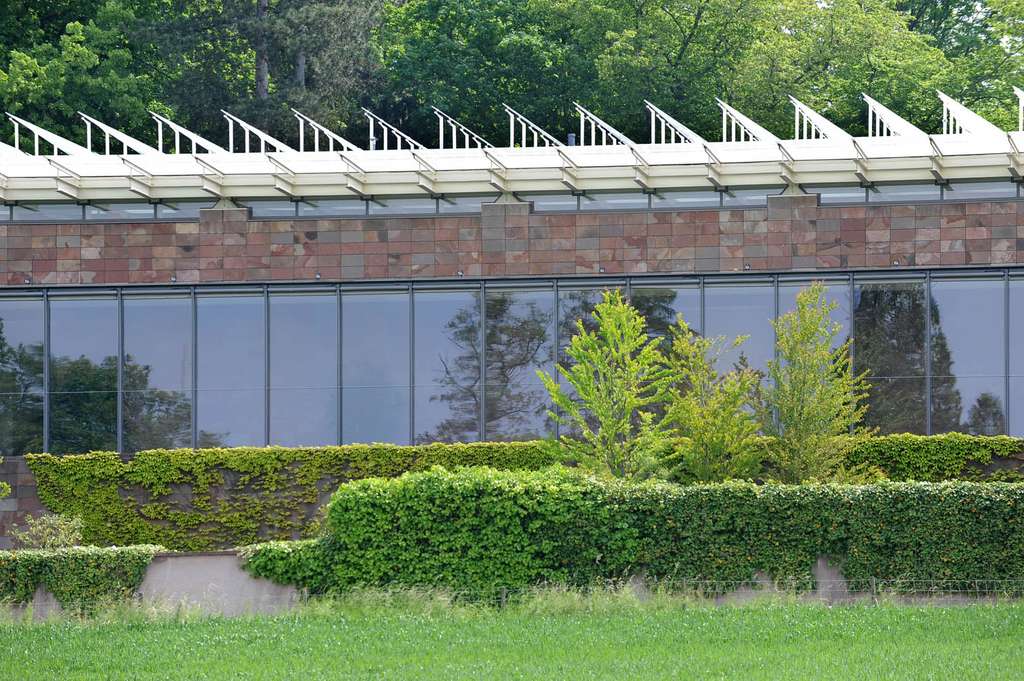In harmony with nature and art
The Fondation Beyeler is considered one of the world's most beautiful museums. Its location in the middle of Berower Park, with its old trees, water lily pond and its views of cornfields, grazing cows, vineyards, and the foothills of the Black Forest, is unique. The building was designed by Renzo Piano and is elegantly integrated into this cultural landscape in an ideal combination of nature, art, and architecture.
Founding the museum
In the 1980s, Ernst Beyeler began to think about the future of his collection. He liked the idea of combining groups of works by great artists of the past century with sculptures from Africa and Oceania in a fitting place – a place that had yet to be created. The foundation was created in 1982 and the idea of building a museum was born. Impressed by the work of Renzo Piano, who had designed the Centre Pompidou in Paris and the Menil Collection in Houston, he commissioned the Italian star architect without organizing a competition.
Berower Park in Riehen
In his home town of Riehen, Ernst Beyeler found a plot that had the connection to nature that he was looking for. The beautiful grounds of the Villa Berower estate was ideal setting for a museum in which art and nature should harmonize. At the start of planning, Renzo Piano proposed a building made of three wings adapted to the terrain.
Combination of architecture and nature
The desire to make the collection accessible on one level, and create a pond in front of the building, on the southern side, meant that the entire building needed to be sunk into the ground. This not only created a harmonious merger of building and landscape but also gave the museum a more intimate character. A volcanic rock (porphyry) from Patagonia was used so that the walls would blend into the landscape, as if the building had always been there.
The museum is shielded from the street on the eastern side. From the conservatory to the West, the view opens to the landscape stretching to the Wiese river at the foot of the Tüllinger Hills. To the South, the pond filled with water lilies reflects Monet's works and creates a smooth transition between interior and exterior. The stone seats on the terraced lawn in front invite you to look at the art in the museum from outside.
Natural light for the art
The museum needed to be filled with natural light. This led to the idea of a lightweight glass roof, which would contrast with the solid stone walls. Daylight is captured on the North, and blocked on the East and West. The roof protrudes far beyond the stone walls and protects the glass facades from the sun. The frosted glass panels prevent shadows from being cast in the rooms but allow for subtle changes in light, creating a lively atmosphere.

![[Translate to Englisch:] Die Villa Berower [Translate to Englisch:] Die Villa Berower](/fileadmin/_processed_/7/1/csm_DSC_4670__671a22d437.jpg)
The Villa Berower
The late-Baroque Villa Berower stands opposite the museum and houses the museum administration, as well as its own restaurant. The elegant architecture and the villa's excellent location in the spacious park creates an inviting atmosphere. From the large terrace, you can enjoy a beautiful view of the park and the sculptures of Alexander Calder and Ellsworth Kelly.